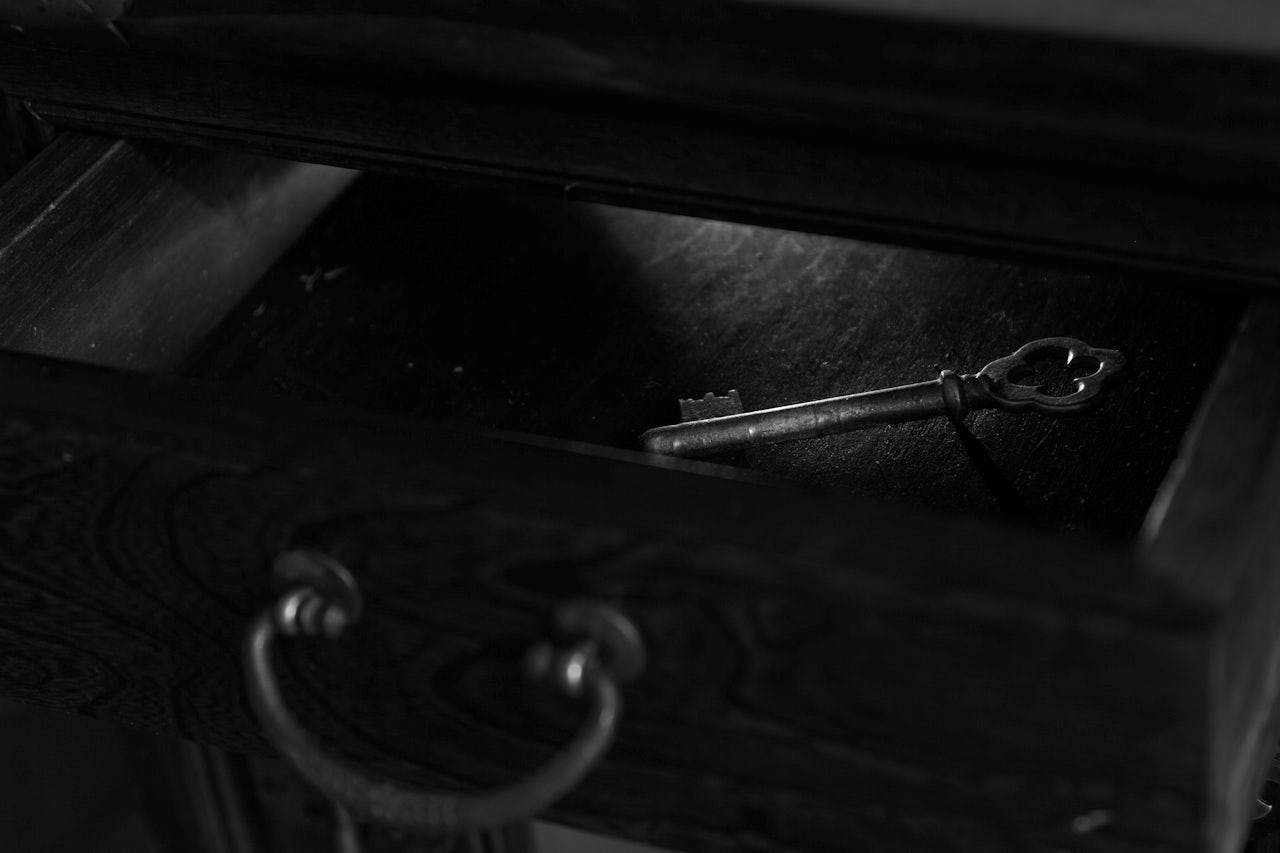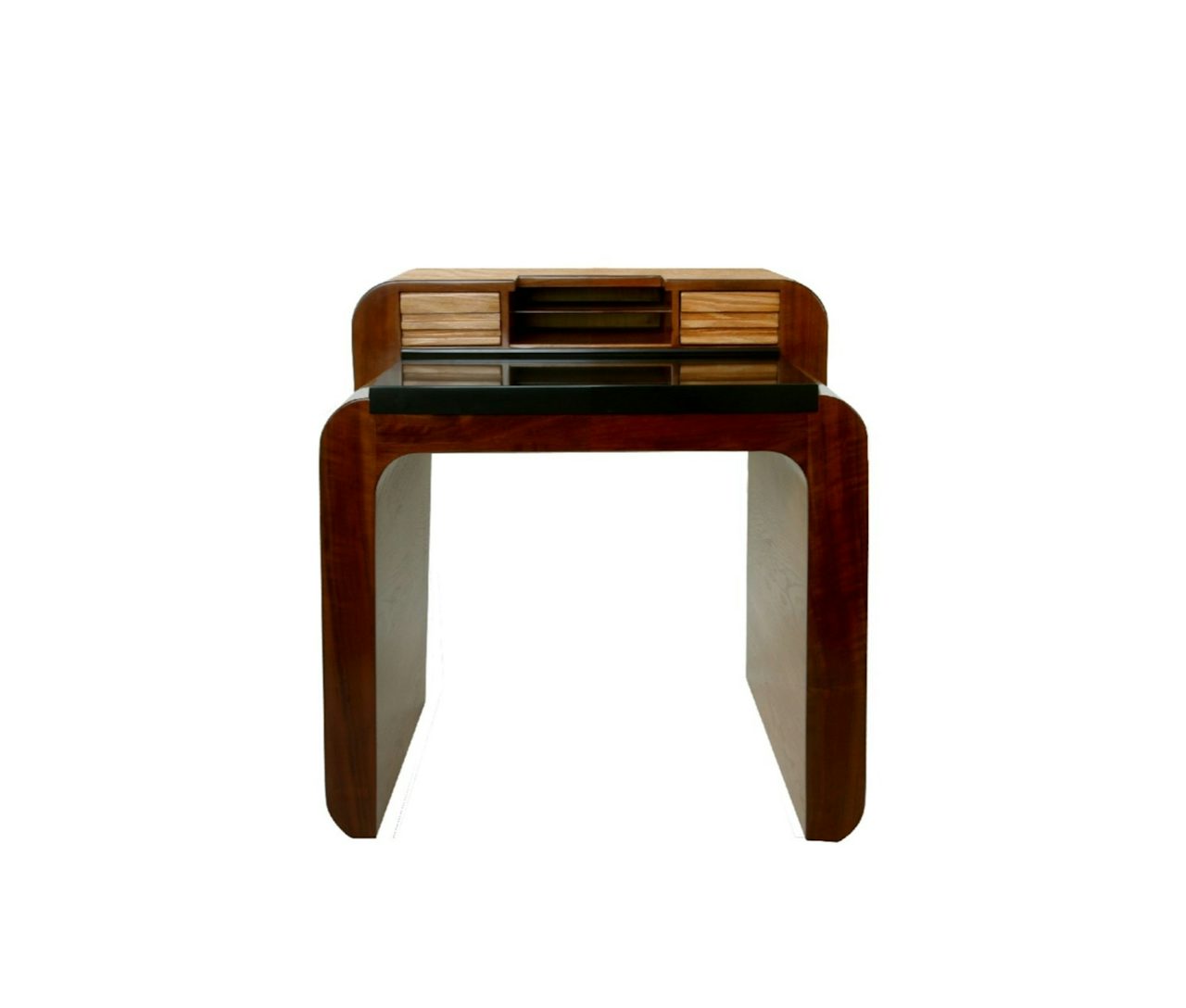In 1974, New York-based furniture designer Dakota Jackson was commissioned by a client to design a desk as a birthday present for the woman’s ex-lover. The desk, intended by the client to be a “mystical object,” was to contain multiple hidden compartments. One of these compartments involved a Chinese puzzle component, requiring the recipient to engage in a sort of game, rearranging the pieces in a specific formation in order to access a hidden drawer. About 40 years later, when the woman brought the desk back to Jackson for restoration, she revealed that she had placed a photograph of herself in one of the compartments, so that her ex-lover, who was living with someone else at the time, could keep a piece of their relationship, hidden away.
“In a way, it was a sort of love charm, a way of saying never forget me,” Jackson told me recently over the phone. The love charm worked — the woman was Yoko Ono and her ex-lover, John Lennon.
From Michaelangelo’s secret hiding room beneath the Medici Chapel to the various false-bottom contraptions that riddled teen sleuth Nancy Drew’s investigations, hidden compartments have long been featured in literature and historical half-truths as a way of revealing what people least want the outside world to see. “It’s interesting, people have different things they want to hide,” said Jackson. “If you can keep a secret, let’s say and nobody was to know that whatever the object you possess has additional elements to it like hidden compartments, then it’s really personal. It brings you into a closer connection... It holds a sense of wonder in that...whatever you put in in this object is for safekeeping.”
My first encounter with hidden-compartment furniture was a small cupboard with false-bottom drawers in which my great-grandmother stashed jewelry and valuables. She had learned of the advantages of hidden compartments through decades of experience; in Vietnam, when her children were tied up and held at gunpoint during a robbery, she was able to give up only a few valuables, the rest having been cleverly concealed beneath stacks of cheap dishes and silverware in the china cabinet. When World War II ended and her family was called back to Taiwan, she hid wedding diamonds in toothpaste tubes in order to sneak what valuables she had past corrupt border guards, providing her family with a safety net in a situation in which they would otherwise have to start again with nothing.
What we hide, and from whom, is often a way to trace shifting power dynamics in different contexts. Hidden-compartment furnishings held a special appeal for women in the past, as the Denver Sun reported in1905: such furniture is well-suited for the woman who does not have the “fireproof deposit safe or a safe place in the office” to store secret documents like her male counterpart.
On the other side of the world, in a different era, the photographer Li Zhensheng, one of the most thorough documentarians of China’s Cultural Revolution, stored “negative” negatives of the photographs he took as a propaganda photographer in the secret compartment of his work desk. By smuggling them home periodically, he was able to preserve these images and thus parts of history that would otherwise be lost to more dominant narratives..
Beyond the romance of hidden compartments, there is a pragmatism to the false bottom drawer. For Jackson, whose background as a magician informed much of his work as a furniture designer, the value of hidden compartments lies in their ordinariness. “The overriding element...is the illusion of normalcy,” he said. “That there is nothing about it that seems suspicious in any way, that would give you a reason to think it was anything other than what you were looking at.”
In the past, the mundanity of hidden-compartment furniture has offered stability despite the unpredictable, providing security in the face of political upheaval and the untrustworthiness of institutional banking. Today, the things we deem valuable and worth hiding have changed over time as money, documents, and identity have become digitized — hidden in a different way behind strings of passwords and the opacity afforded by far-off server farms. As a result, the hidden compartment furniture industry has adapted. No longer objects of romantic yearning or political intrigue, modern hidden-compartment furniture is often designed with one particular, and very lucrative, paranoia in mind: guns.
Modern security infrastructure makes plain what hidden compartments imply — that perhaps we only truly own what we can successfully hide.
Part of the National Rifle Association’s ubiquity has been attributed to its ability to translate personal security into a lifestyle. From the now defunct millennial-targeted lifestyle blog, NRA Sharp, which offered trendy restaurant recommendations alongside product reviews of firearms, to NRA Country, the vague branding initiative that claims to promote Second Amendment values through country music, the NRA has employed the tools of influencer culture to shape the ideal gun-owner: on trend, patriotic, and ultimately, inextricable from the NRA’s political agenda.
If aesthetic and brand are tenets to the construction of the imagined self in digital media marketing, e-commerce is self-actualization, the selling of the necessary goods to make digital ideologies reality. On the NRA’s official online store, one can find innocuous mantle clocks and stuffed ducks that upon some unique sensory interaction or magnetic trigger pop open to reveal secret compartments for firearms. The accessories sold on the website are just a small sample when it comes to the growing genre of gun-concealment furniture, with tricked out false-bottom dressers and hidden compartment benches available for next-day shipping on sites like Wayfair and Amazon.
Jill Herro created her small business, Secret Compartment Furniture, an online furniture store based out of Ohio specializing in custom-made gun concealment furniture, after being inspired by a concealed-carry firearms class she took with friends on a whim. Having never touched a firearm before the class, her experience changed the trajectory of her life. “I felt very empowered,” she said. “So I thought, well, I don’t have any children in the home, my husband and I had never owned firearms of any kind, but I thought it might be nice to have one available if we ever needed it. I decided I would want a piece of furniture so that I could have it available but not locked up and encumbered where you can’t hardly get at it. I looked for something like that on the internet and all I could find was garage project type of stuff, hideous stuff that was awful and had no sort of aesthetic.”
Six months after taking the class, Herro was laid off from her job in pharmaceutical sales and took the opportunity to open a business specializing in high-quality, well-designed concealment furniture. Ten years later, Secret Compartment Furniture sells a wide range of Amish-built custom products that vary from small bedside tables with sliding tops to beds with headboard compartments that cost between $300 to $3,000.
Herro’s furniture performs a spell for its owner just as Jackson’s did, enabling the owner to establish a sense of control through a physical object. Jackson acknowledges the importance of incorporating the personal nature of this type of furniture into its design, “There is the notion of the portrayal of power, which is so much of what magic is about…[portraying] a sense of wealth or the connection that the person who possesses the piece has a certain knowingness about the object that others do not.”
With terabytes of personal data strewn across the Internet, and new concerns about who has access to it raised almost daily, modern security infrastructure makes plain what hidden compartments imply — that perhaps we only truly own what we can successfully hide.
According to researchers from the University of Basel and Boston University, humans are predisposed to value the physical over the digital due to psychological feelings of ownership. In a five-part study, they assessed the amount that subjects were willing to pay for physical versus digital goods such as books, photographs, and music, as well as the monetary values subjects ascribed to goods according to the medium. In an email, Ozgun Atasoy, a researcher and faculty member at the University of Basel, explained that psychological ownership was found to be higher for physical goods because “We develop a stronger sense of control over things we can touch, and we can only feel ownership for things that we control.”
The relationship between possession and owner that is so embodied within hidden-compartment furniture is eroded in digital goods, which may explain why people are less careful about their valuables online and why a culture of digital complacency continues to abound despite an increase in data breaches across the world. Within the context of digital goods, Atasoy explains this carelessness: “If digital objects are considered to hold lower economic value compared to physical objects, their unauthorized use would be judged as less of a transgression than physical theft.”
Therein lies the irony of our hyper-personalized internet experience, filled with voluntary overshare and the increasing blurring of boundaries between who we are and our digital selves. As our conceptions of privacy and security change under these conditions, perhaps it is best that we still reserve some secrets, whether hidden in a custom-made dresser or under the mattress on our bed, for the physical world.

